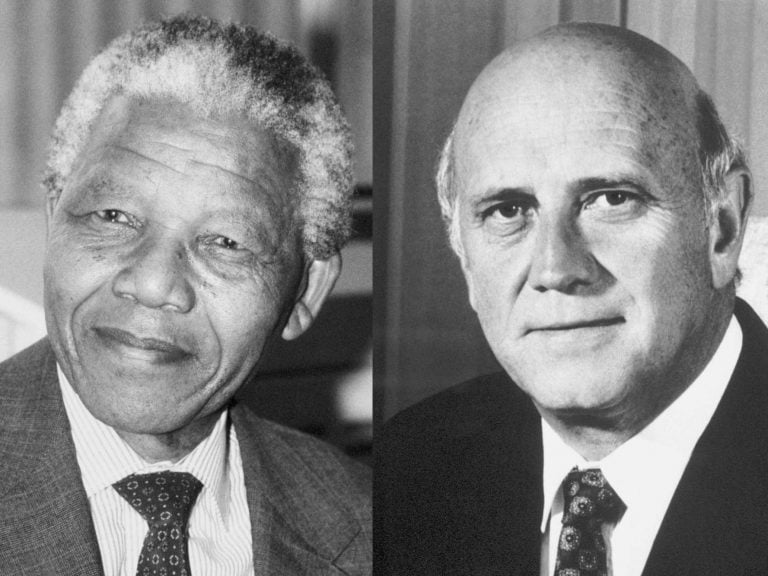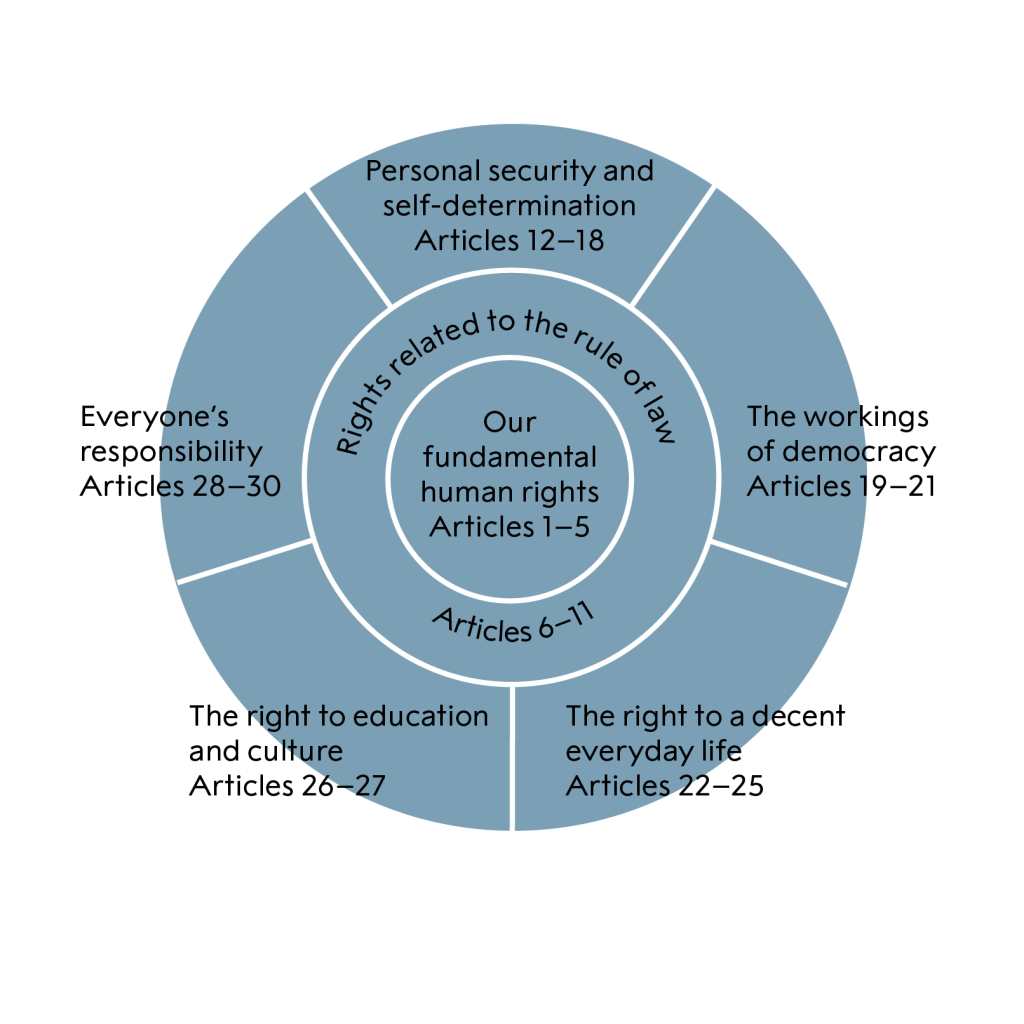Nelson Mandela & F. W. de Klerk

Photo from the Nobel Foundation archive.
Watch the video about Nobel Laureates Nelson and Frederik Willem de Klerk
and then answer the questions.
In 1948, a system of racial segregation and white supremacy known as apartheid was established in South Africa. Apartheid divided up the population according to skin colour – whites at the top, followed by coloureds (people of Indian and mixed-race decent), with blacks at the bottom. The groups were meant to live completely separate lives. The coloureds and blacks did not have the same rights as whites. They were not allowed to use the same buses, pavements, toilets or beaches as the whites, and were punished harshly if they broke these laws. The whites also had better schools and housing, and only they had the right to vote in South Africa. The purpose of apartheid was to preserve the whites’ power over the country.
Nelson Mandela was a member of the African National Congress (ANC), a political party whose goals included abolishing apartheid. In 1962, he was sentenced to life in prison for attempting to overthrow the South African government by violence. During Mandela’s twenty-seven years in prison, he was an important symbol of the struggle against the apartheid regime, both inside and outside South Africa.Frederik Willem de Klerk was politically active in the Nationalist Party against whose apartheid politics Mandela was fighting. De Klerk was President of South Africa from 1989 until 1994. No one imagined that the two former enemies would one day meet, put an end to apartheid and together create democracy in South Africa.
In 1993, Nelson Mandela and Frederik Willem de Klerk were awarded the Nobel Peace Prize for their work to peacefully end the apartheid regime and lay the groundwork for a new democratic South Africa.
1. Who were Nelson Mandela and Frederik Willem de Klerk?
2. Apartheid in South Africa lasted from 1948 until 1994. What was apartheid like as a social system?
3. What did Mandela want to achieve? How did Mandela and de Klerk go about trying to achieve this goal?
4. What human rights do you see as connected to the two Laureates’ work and the situation in South Africa under apartheid?
Start by looking at the image below and decide what kind of rights she
was fighting for. Then use Amnesty’s summary version of the Universal Declaration of Human Rights to identify one or more specific articles.

Additional resources: South Africa
5. What is it like in South Africa today? Have the people gained the rights Nelson
Mandela was fighting for? Search for information on the Internet. Use evidence from
at least two sources in presenting your answer.
Some recommended sources of information:
• https://www.hrw.org/world-report/2020/country-chapters/south-africa
• https://www.theguardian.com/world/2008/mar/07/southafrica.race
6. What do you think is needed to achieve greater equality in South Africa?